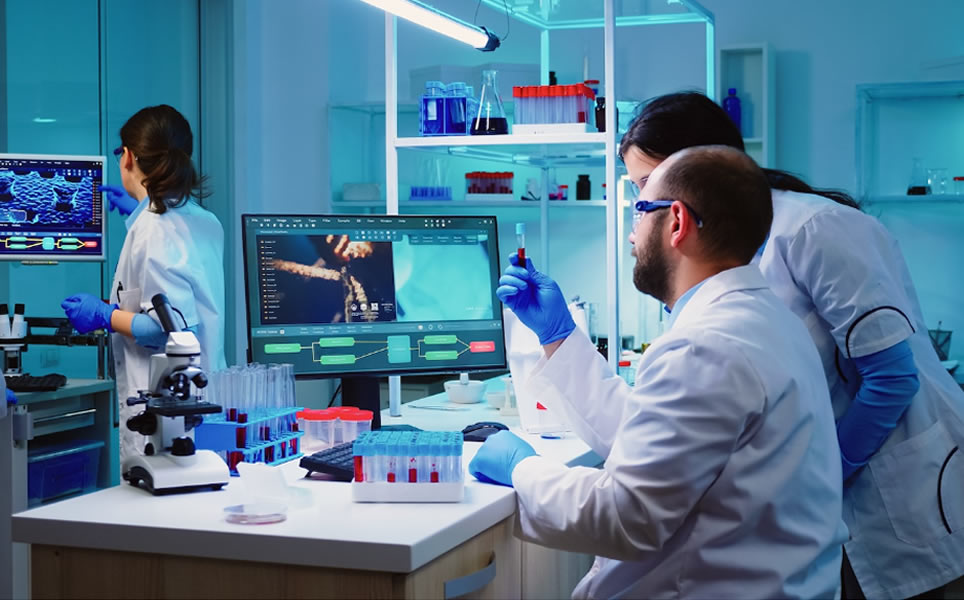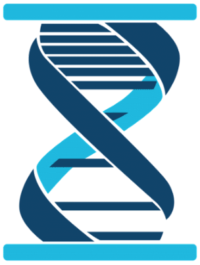
Cancer Treatments
Many cancer treatments exist today. They include mostly chemotherapies and immunotherapies. Newer technologies targeting telomerase have surfaced in the past 20 years and Dr. Andrews is one of the inventors of all of them. The most promising of these technologies so far are inhibitors of telomerase activity, such as Imetelstat, that kill cancers by allowing the telomeres to shorten, inducing senescence in the cancer cells. The main problem with this type of technology is the shortened telomeres also induce skyrocketing mutation rates that allow cancers to find other ways to lengthen telomeres such as the “Alternative Lengthening of Telomeres (ALT) pathway”. No one has yet figured out how to inhibit ALT.
The shortened telomeres also induce mutations to allow cancers to metastasize and survive any treatments (e.g., chemotherapies) that are often used to try to kill cancers. This is why most cancers come back.
Dr. Andrews has significant experience in cancer research and was awarded 2nd place for U.S. Inventor of the Year for his cancer research in 1997. In all cases of older patients, in order for a cancer to survive long enough to kill the person, it must solve its telomere shortening problem because if the telomeres are allowed to shorten then a cancer cannot get larger than a large mole before succumbing to senescence and dying. 85% of all cancers keep their telomeres long by producing telomerase as a result of the mutations induced by their short telomeres. Dr. Andrews has designed strategies called “Toxic Nucleotides” and “Toxic hTR” that poison telomerase producing cells WITHOUT inhibiting telomerase’s activity. Thus, telomeres remain long, and mutation rates do not skyrocket. In fact, if telomeres are already short in cancer cells Dr. Andrews feels that it would be best to first lengthen them with Telomerase gene therapy to prevent the skyrocketing mutation rates. And, then poison the cancer cells.
Since non-cancer cells do not contain telomerase, or significantly less telomerase than cancer cells, these protocols will be relatively harmless, to non-cancer cells.
The global cancer therapy market was valued at approximately USD 158 billion in 2020, and it is expected to witness a revenue of USD 268 billion in 2026, with a CAGR of 9.15% over the forecast period (https://www.mordorintelligence.com/industry-reports/cancer-therapy-market).
Plan 1: Toxic Nucleotides
Basic Research Required
Estimated Time: 2 Years
Employees:
2 Medicinal Chemists (Scientists) that are skilled in nucleotide chemistry.
1 Enzymologist (Scientist) that is skilled in Polymerases
1 High Throughput Screener (Scientist) that is skilled at Cell Based assays.
1 QA/QC Scientist.
Lab Space: 1000 sf ($130/sf)
Office Space: 250 sf ($130/sf)
|
Salaries |
$1,200,000 |
|
Floor Space |
$325,000 |
|
Operations |
$791,400 |
|
Miscellaneous |
$283,000 |
|
Equipment |
$1,878,400 |
|
Labware |
$250,000 |
|
Office Supplies |
$4,000 |
|
Utilities |
$22,000 |
|
Total Research Investment |
$4,753,800 |
Additional funding might be needed along the way to cover screening costs depending on how many samples get screened.
By providing this investment the Entrepreneur or Investor will have Exclusivity.
This project will require substantial research. However, the principle is solid, and the research is very straight forward. The approach is to test 1000’s of nucleotide analogs, using our high throughput screening robots to identify analogs that get successfully incorporated into telomere sequences by telomerase but are completely ignored by all other polymerases. These nucleotides would then be modified to be toxic using medicinal chemistry. When introducing these toxic nucleotide analogs to cancer cells the telomerase enzyme will incorporate the nucleotides into the telomere sequence killing the cancer cell. Since non-cancer cells do not contain telomerase, these nucleotides will be harmless to non-cancer cells.
As of yet, Sierra Sciences has not tested any nucleotide analogs. There are 18 known polymerases besides telomerase in human cells, though only 5 of them might be important for cell survival. These 5 (α, β, γ, δ, and ϵ) are very well characterized polymerases that are commercially available and easily tested. Sierra Sciences already has the enzyme telomerase and the tests for its activity.
Plan 2: Toxic hTR
Basic Research Required
Estimated Time: 2 Years
Employees:
2 Molecular Biologists (Scientists) that are skilled in vector construction.
1 High Throughput Screener (Scientist) that is skilled at Cell Based assays.
2 Cell Biologist (Scientists) that are skilled in transduction protocols of mammalian cells
1 QA/QC Scientist.
Lab Space: 1200 sf ($130/sf)
Office Space: 300 sf ($130/sf)
|
Salaries |
$1,440,000 |
|
Floor Space |
$390,000 |
|
Operations |
$791,400 |
|
Miscellaneous |
$339,600 |
|
Equipment |
$1,453,200 |
|
Labware |
$300,000 |
|
Office Supplies |
$4,800 |
|
Utilities |
$26,400 |
|
Total Research Investment |
$4,745,400 |
Additional funding might be needed along the way to cover screening costs depending on how many samples get screened.
By providing this investment the Entrepreneur or Investor will have Exclusivity.
Andrews first discovered the RNA component (hTR) of human telomerase at Geron Corporation in 1994, he and his team proved to the world that they had succeeded by changing the template sequence CUAACC of hTR to CCAACC and CAAACC and then showed that the new hTR template sequences produced telomeres with new repeat sequences corresponding to the new templates. Soon thereafter, at Sierra Sciences, Dr. Andrews and his new team tried creating newer template sequences to see if any were toxic to the cell when creating the new telomere repeats corresponding to the new templates. They created nine new templates and found a few that were toxic. The most toxic template was CGCUAC, and Sierra Sciences patented this technology. There are 4096 different templates that can be created and so far, Sierra Sciences has only created 11 total. If we were to test the remaining 4085 template sequences, it is very likely that we will find templates far more toxic than CGCUAC. Sierra Sciences will also want to try varying the length of the telomere template sequence that should provide an indefinite number of other telomere templates to test.
The most toxic template could then be delivered to cancer cells by gene therapy and poison all cancer’s that produce telomerase. Other, non-cancer, cells will also receive the toxic template, but they will be unaffected by the template because they don’t produce the hTERT protein component of telomerase like 85% of all cancer cells do.
What You Need to do
What You Need to do
The Entrepreneur or Investor will be responsible for all production and marketing. Sierra Sciences is a research company and will not be involved in production and marketing.
What we Will do
What we Will do
Dr. William Andrews and the team would be available to educate audiences on the science and business of each venture.

